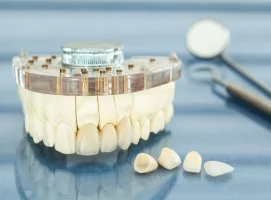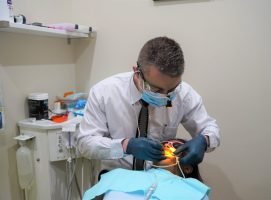Does Spider Vein Removal Actually Work?
Spider veins are tiny, web-like groups of blue, red, or purple veins that usually appear on the legs and may be a happening of problem for many individuals. They can occur due to various circumstances, such as age, genetics, prolonged standing, or pregnancy. This leads to a common question: Does spider vein removal really work? So, this guide will explore the various methods for spider vein removal and their effectiveness.
Spider Vein Removal Methods
Spider veins can be eliminated or reduced in appearance using a variety of techniques. The two primary categories of these techniques are non-invasive and invasive procedures.
Non-Invasive Procedures:
Sclerotherapy: One of the most popular and successful treatments for spider veins is sclerotherapy. A particular solution is injected into the veins that are damaged during this treatment. The venous lining becomes irritated by this solution, which finally causes it to collapse and be reabsorbed by the body. Sclerotherapy is a very safe and minimally invasive procedure.
Laser Therapy: In laser therapy, the blood vessels are heated and targeted with laser light, which eventually causes the vessels to fade and collapse. It works especially well on tiny spider veins on the face.
Compression Stockings: While not a removal method, compression stockings can help manage the symptoms of spider veins. They apply pressure to the legs, promoting better blood flow and reducing discomfort and swelling.
Invasive Procedures:
Endovenous Laser Ablation (EVLA): EVLA is an invasive procedure used for larger veins. It involves the use of laser energy to seal off the affected vein, redirecting blood flow to healthier vessels.
Radiofrequency Ablation (RFA): Similar to EVLA, RFA uses radiofrequency energy to close off the damaged vein. It is effective for larger spider veins and varicose veins.
Ambulatory Phlebectomy: This is a surgical procedure in which the affected veins are physically removed through tiny incisions. It is typically used for larger veins that are close to the skin’s surface.
Does Spider Vein Removal Work?
The effectiveness of spider vein removal methods depends on various factors:
Size and Type of Vein: The size and type of spider vein can impact the success of removal. Smaller veins tend to respond better to non-invasive methods like sclerotherapy and laser therapy.
Individual Variation: How well a person responds to treatment can vary. Some individuals may see significant improvement after just one session, while others may require multiple treatments.
Skill of the Provider: The experience and skill of the healthcare provider performing the procedure can influence the outcome. It is essential to seek treatment from a qualified and experienced specialist.
Conclusion
Spider vein removal can be effective. The choice of method depends on the size, location, and type of spider veins. For smaller veins, non-invasive therapies like sclerotherapy and laser therapy are frequently effective; nevertheless, intrusive operations can be required for bigger or more recalcitrant veins.
However, it is crucial to set reasonable expectations. It might not always be able to completely remove spider veins, in which case maintenance procedures can be required. You may consult a vein specialist about what is a vein center does. Furthermore, in order to guarantee safe and efficient treatment and to ascertain the best course of action for your particular situation, it is imperative that you speak with a dermatologist or other healthcare professional.














